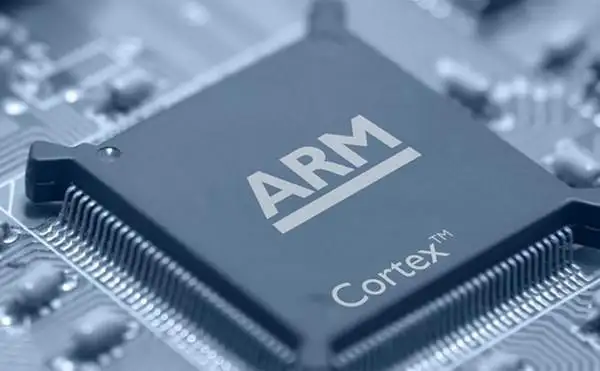
What is the difference between ARM architecture, ARM7, ARM9, STM32, Cortex M3 M4, 51 and AVR?
What is the ARM architecture? ARM architecture: the general name of series of 32-bit RISC microprocessor architectures designed by the British company ARM, existing ARMv1 ~ ARMv8 types.
ARM7: A class of ARMv3 or ARMv4 architecture, using the von Neumann structure of the core.
ARM9: A class with ARMv4 or ARMv5 architecture, using the Harvard architecture core.
Cortex M3: Adopted ARMv7 architecture using Harvard architecture cores.
Cortex M4: ARMv7-based core with Harvard architecture. (The biggest difference from the former is the addition of a DSP processing function and SIMD single instruction multiple data function.)
STM32: STMicroelectronics (ST) launched a series of microprocessor / microcontroller based on the Cortex-M0/Cortex-M3/Cortex-M4 cores.
51: Intel introduced in 1981 by the 8031 microcontroller transformation upgrade, using the CISC instruction set, the von Neumann architecture, 8-bit 8051 microcontroller. Later Intel licensed the core of 8051 microcontroller to other IC makers, making 8051-like ICs widely available on the market, and this kind of ICs with 8051 core is abbreviated as 51.
AVR: A series of 8-bit microprocessors with improved Harvard architecture and RISC instruction set introduced by Atmel in the early 1990s.
Intel’s 4004, 8008, 8086, 80286, TI’s TMS 1000, and other companies developed their own programmable ICs. Because they are different companies and there is no communication between them, the CPUs, buses, memory units, and instruction sets of the chips developed by each of them are different. However, there is a certain structure and technical continuity between the chips developed by each company, so there are different architectures in the IC chips developed by different companies.
Architecture is an abstract concept, a product of a subjective mapping of the elements within a structure and the relationships between elements.
We often talk about computer processors with 486, Ivy Bridge, Pentium M, etc., which are different architectures. The Wikipedia only mentions the common hardware architectures in computer processors, not the architectures used in microprocessor/microcontroller commonly used in embedded systems that you want to know about.
And the connection is that the ARM architecture to STM32 these names belong to the ARM architecture.
IP core: IP core is the hardware architecture of this abstract concept in the IC’s concrete implementation.
When Intel’s 8031 and 8051 in the embedded industrial control field is very hot. Intel gradually abandoned the production of 8051 chips because of the production cost and expansion of the field, and allowed other companies to produce Intel’s ICs. Intel sold the hardware description language license to other companies on how to implement the 8051 architecture, and the authorized companies can produce chips with 8051 cores.
Microcontroller MCU/Microprocessor μP
In the beginning, there were only microprocessors used in small microcomputers. Later, from the Intel 4004 to the 8086, the 8031/8051 was derived specifically for industrial control. Microprocessors for computers slowly developed to ultra-high integration, high capacity, high frequency, and large processing power to meet the growing needs of computer technology. The 8051 was developed smoothly into a highly stable, multi-functional integrated microcontroller to meet the demand for memory in industrial control.
The microcontroller MCU comes with internal RAM, and ROM, and other peripheral functions (such as serial, spi, I2C and other functions). Simply put, it is a computer with reduced resource capacity put into a single chip.
In the beginning, microprocessors were not integrated with RAM, ROM, and other peripheral functions. Because of the development of PowerPC to embedded, and later the emergence of ARM, the line of distinction between microprocessor and microcontroller became blurred.
From TI’s DSP, ARM7, ARM9 and other chips to see the difference between microcontroller MCU and microprocessor.
Microprocessor µP is required to expand RAM and ROM externally through parallel port, and the program is started from external ROM and run in external RAM.
The microcontroller MCU starts the program through internal ROM and runs the program in internal or external RAM.
There are IC chips that can be configured as microprocessors or as microcontrollers. The difference in their configuration is where the program is started from and where it runs. An example is Texas Instruments TI’s TMS320F2812 DSP.
DSP is also essentially a microprocessor/microcontroller, which contains DSP digital signal processing functions. The above-mentioned Cortex-M4 is also integrated with DSP digital signal processing functions. But the ARM Company does not call it DSP, which is called by the engineers themselves.
Author name: Alan Smith
Also read here: ARM architecture
- what are the practical applications of embedded systems?
- what are the challenges in embedded systems design?
- What are the important parts of an embedded system?
- Embedded Systems Future: Design of optimized Energy Metering Devices
- How to do the software power optimization in embedded systems?
- Revolution brought by Embedded Systems with Data Analytics
- What is the Linux Operating System?
- What are the factors that Influence the selection of Embedded Microcontrollers?